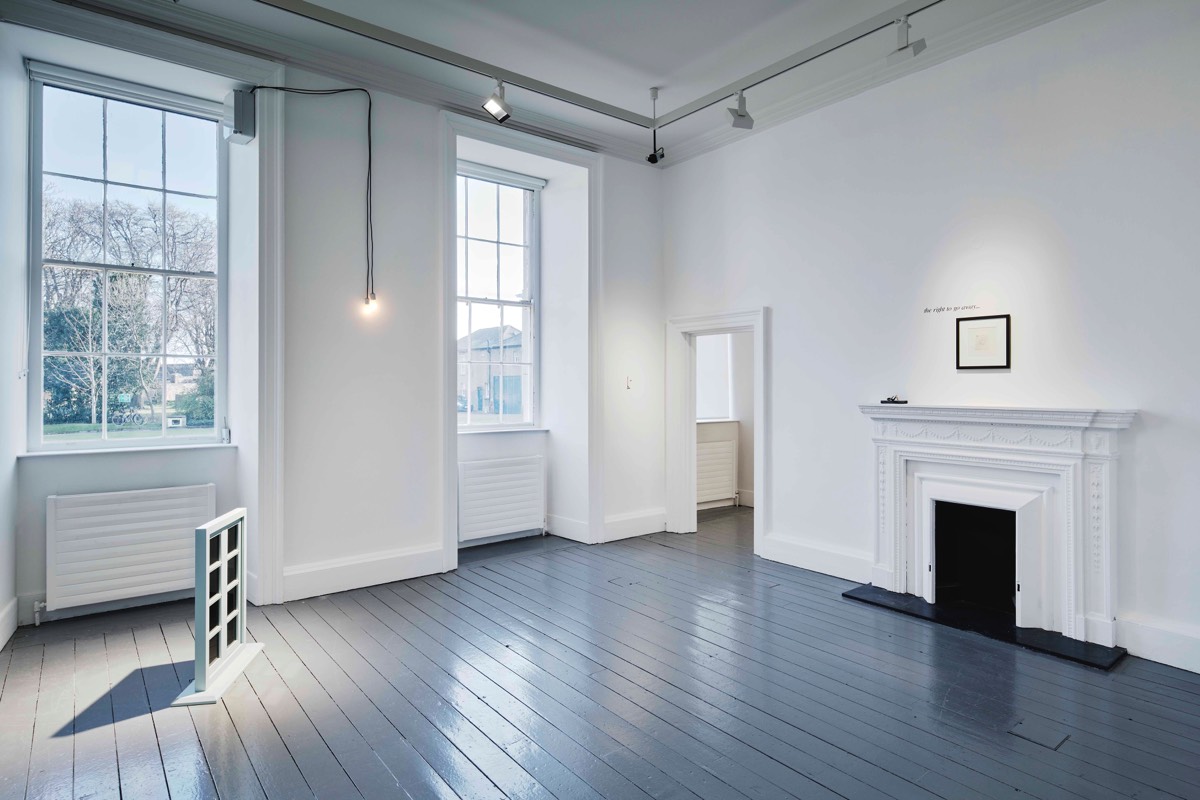

PORTRAIT OF BAUDELAIRE AFTER RAYMOND VALLANCE, 2019
Bronze head, 29 x 16 x 21 cm
A bronze head with a black patina sits on a plinth, Portrait of Charles Baudelaire after Raymond Duchamp-Villon is a remodelling by the Walker brothers of a portrait of Baudelaire that was made by Raymond Duchamp Villon, brother of Marcel Duchamp in 1913.The portrait is a severe representation with a large crown for the head and a down-turned mouth which can be attributed to Edward Manets representations of Baudelaire. Baudelaire had been dead for almost half a century before Duchamp-Villon made his portrait. Remodelled here, with his smooth and swollen dome, his ruthless nose, and dead, unseeing, angled eyes, the unsettling nature of the work makes reference to the severity of a Roman or French Gothic sculpted head but is ultimately modernist in its form.
Housed within the bronze head are three objects, a lump of clay, a ruby and a meteorite which reference other representations of Baudelaire that can be attributed to Stéphane Mallarmé. In Mallarmés poem “The Tomb of Charles Baudelaire,” the initial image is not actually that of a tomb but of the dead poet himself. The buried temple refers to Baudelaire’s body, which, though already buried in the Montparnasse cemetery, still has mud and rubies issuing from its mouth, a reference to both the profane and the beauty contained in Baudelaire’s poetic utterances.
The meteorite refers to Mallarmé's portrayal of Edger Allen Poe's tomb as a kind of meteorite emphasising Mallarmé's perception of Poe as an extraterrestrial. Baudelaire over the course of time had employed Poe as his final and most inducing intercessor, a means to navigate his complex political and artistic practice.This unique relationship is addressed in all it complexities in Walker and Walker’s play Return Inverse, a copy of which sits nearby on the windowsill.
Installation at the Irish Museum of Modern Art
Bronze head, 29 x 16 x 21 cm
A bronze head with a black patina sits on a plinth, Portrait of Charles Baudelaire after Raymond Duchamp-Villon is a remodelling by the Walker brothers of a portrait of Baudelaire that was made by Raymond Duchamp Villon, brother of Marcel Duchamp in 1913.The portrait is a severe representation with a large crown for the head and a down-turned mouth which can be attributed to Edward Manets representations of Baudelaire. Baudelaire had been dead for almost half a century before Duchamp-Villon made his portrait. Remodelled here, with his smooth and swollen dome, his ruthless nose, and dead, unseeing, angled eyes, the unsettling nature of the work makes reference to the severity of a Roman or French Gothic sculpted head but is ultimately modernist in its form.
Housed within the bronze head are three objects, a lump of clay, a ruby and a meteorite which reference other representations of Baudelaire that can be attributed to Stéphane Mallarmé. In Mallarmés poem “The Tomb of Charles Baudelaire,” the initial image is not actually that of a tomb but of the dead poet himself. The buried temple refers to Baudelaire’s body, which, though already buried in the Montparnasse cemetery, still has mud and rubies issuing from its mouth, a reference to both the profane and the beauty contained in Baudelaire’s poetic utterances.
The meteorite refers to Mallarmé's portrayal of Edger Allen Poe's tomb as a kind of meteorite emphasising Mallarmé's perception of Poe as an extraterrestrial. Baudelaire over the course of time had employed Poe as his final and most inducing intercessor, a means to navigate his complex political and artistic practice.This unique relationship is addressed in all it complexities in Walker and Walker’s play Return Inverse, a copy of which sits nearby on the windowsill.
Installation at the Irish Museum of Modern Art
